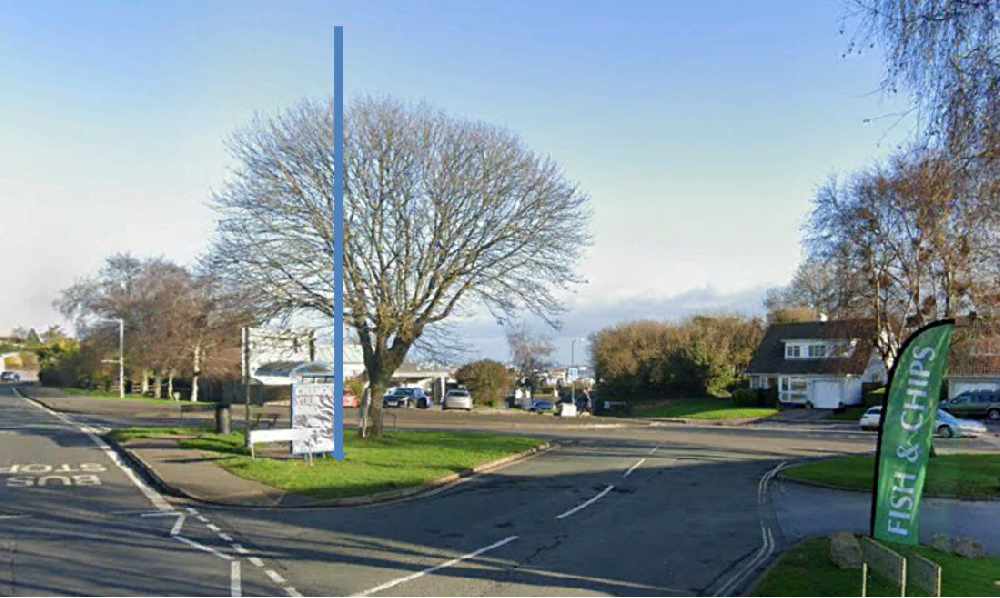
It's twice the height of trees
Scores of objectors are opposing plans for a 20-metre 5G mobile phone mast at a road junction leading to one of Torbay’s main tourist beaches.
Network operator Three wants to site the pole and cabinets near a tree, bench and bus shelter at the junction of Dartmouth Road and Broadsands Road at Paignton.
Objectors say the mast would be almost twice the height of the tree on the triangle of land near shops and Churston Library.
They raise concerns over the impact of the 5G technology on public health, plants and wildlife, and say it would be an eyesore on a main route used by tourists to reach Broadsands Beach and Elberry Cove.
They also say the work could affect the tree and the equipment could be a safety hazard by limiting visibility at the busy junction.
The plans are for a 20m (66ft) pole with six antennas and two dishes, and four cabinets on the ground. The application asks Torbay Council to determine if prior approval for the development is needed under planning law.
By Thursday afternoon, 68 objections had been submitted via the authority’s online planning portal.
Information supplied on behalf of Three says the equipment complies with guidelines on exposure to radio waves which means there should be no effect on public health.
It says the installation using a slim pose has been designed to preserve the character and appearance of the area and balance operational and environmental issues, with the impact outweighed by the benefits of improving the network.
Police say 5G equipment can be vulnerable to damage, graffiti, arson and theft. They are recommending the installation is protected with security measures and covered by CCTV. A highways officer says it should be fitted with a crash barrier in case of a collision.
Council officers were concerned about possible damage to the roots of the tree during construction. But a report says the tree would be protected during the work and a site investigation showed the roots would be unaffected.
Objector Valerie Judd wrote: “The proposed development consisting of a 20-metre plus high telecommunications mast, electrical cabinets, security cameras and a crash protection barrier would be an absolute eyesore on a pleasant tranquil piece of land at Churston Broadway.”
Sandra Manton said: “5G has been proven to be detrimental to public health. It causes a great many side-effects. It also damages nearby trees and other plants. Local properties will be devalued. It will therefore be unpopular in the neighbourhood.
A 60 foot high tower will be an eyesore for tourists to observe on their way down to the beach. “Surveillance will also be uncomfortable for everyone.”
Andrew Beer commented: “The proposal for a mast of this height on this piece of land is not in keeping with the area as a scenic gateway to one of the key tourist beaches in the Bay. There is nothing of this height in the surrounding area and this mast along with the associated cabinets required will make the land feel more industrial.
“Surely there are more suitable locations in the vicinity which would be less prominent and have less of an impact on the skyline and the natural environment.”
Network operator Three says the equipment is designed to comply with international guidelines on public exposure to radio waves.
It says the UK’s National Institute for Health Protection, formerly Public Health England, says 5G does not represent an increased risk compared to the previous network technologies.
The NIHP says low overall exposure relative to guidelines means “there should be no consequences for public health”. It says it has taken measurements at 22 places near 5G masts in 10 cities and found emissions were “a small fraction of the levels included in international guidelines.”.
It found the maximum was around 1.5 per cent of guidelines, including signals from 3G and 4G. The highest level from 5G was 0.039 per cent of the maximum set out in the international guidelines.
Three says it has more than 11million UK customers, using on average 10.4gigabytes of data a month, and demand is predicted to grow to 90gigabytes by 2025.
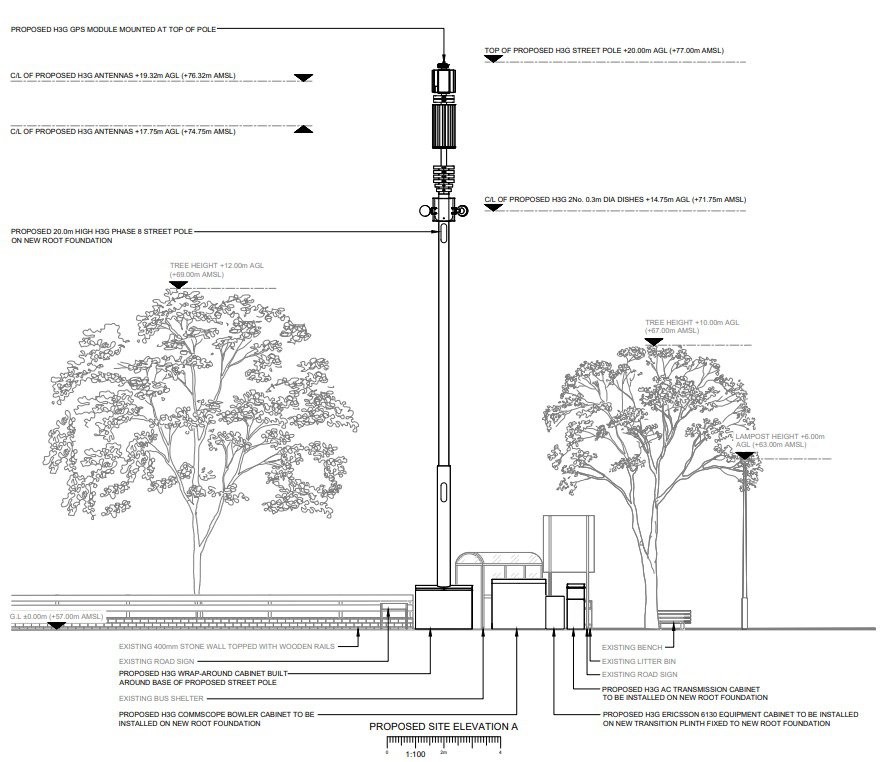
5G phone mast plan for Dartmouth Road, Churston, Paignton (Image: H3G UK Ltd/Sinclair Dalby/LDRS)
Information provided by agent Sinclair Dalby Ltd on behalf of Three in response to objections said the mast would not interfere with television signals.It said the site was needed to provide new 5G coverage and improve 4G coverage in the area, and the location was as far from homes as possible.
It was chosen because the trees would provide screening and the equipment would not look out of place near street lights and road signs. The pole needed to be higher than the trees to achieve the required level of coverage. Its design used the smallest practical components to ensure visual impact was kept to “the absolute minimum”.
The document said: “A slim and unfussy design of support structure has been chosen to minimise impact on the surrounding area. The monopole design of support structure is considered suitable. The finish of the monopole and the equipment cabinets is proposed to be green. Whilst the proposed colour scheme is considered wholly appropriate for this site, the applicant would be willing to adhere to any colour scheme deemed more appropriate by the local authority.
“In terms of the height of the proposed structure, it is acknowledged it would be taller than the existing street furniture and trees. This is necessary as the site is proposed to provide 5G services and 5G uses higher frequencies which do not propagate through material and potential obstructions as well as lower frequencies, thus there is a need to ensure that the antennas clear local clutter, in particular the trees in the area.
“There are mature trees close to the site and in the wider surrounding area, which would provide a significant degree of screening and/or backdrop to the proposed development. The level of screening of the equipment will depend on the specific viewpoint, however, overall, the screening would assist in minimising visual impact, and preserving residential amenity, as much as possible.
“It is considered the proposed equipment is appropriately located. The design of the monopole results in a less intrusive facility than other designs, therefore preserving the character and appearance of the area. It is further considered the proposal strikes an appropriate balance between operational and environmental considerations, and the impact of the development would be outweighed by the significant public benefit of the proposal.”
The 5G system has been heralded as providing a technology revolution with faster data transfer. That will enable the ‘Internet of Things’ to connect smart cars, buildings, and household devices, as well as providing improvements in public services, industry and commerce.
Health officials say there is no evidence of harm from the technology and the effects are kept under review, but opponents claim 5G is untested and they have raised concerns about its impact on human health, wildlife and plants.
Councils have limited powers under planning law to control mobile phone masts and cannot set limits different to international guidelines. The Government has asked local authorities to back the 5G rollout to support economic growth.
The new network uses a higher frequency of microwaves than earlier systems and can carry more data but works over shorter distances, so the 5G network needs more but smaller masts to provide coverage.
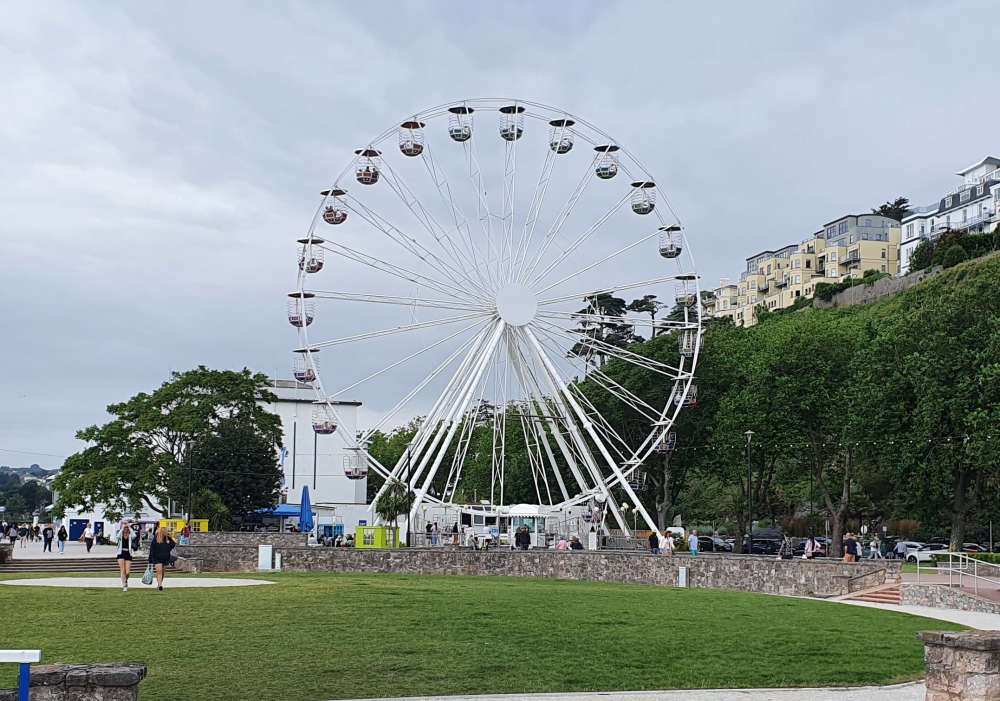 Torquay big wheel will 'lift the spirits' for years to come
Torquay big wheel will 'lift the spirits' for years to come
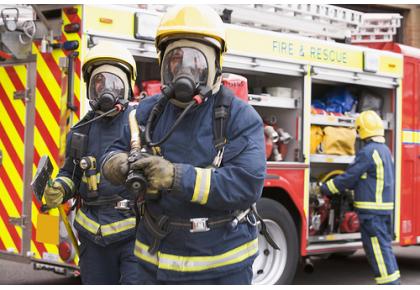 Investigations underway following fire in Devon village
Investigations underway following fire in Devon village
 10,000 new homes could come to Plymouth
10,000 new homes could come to Plymouth
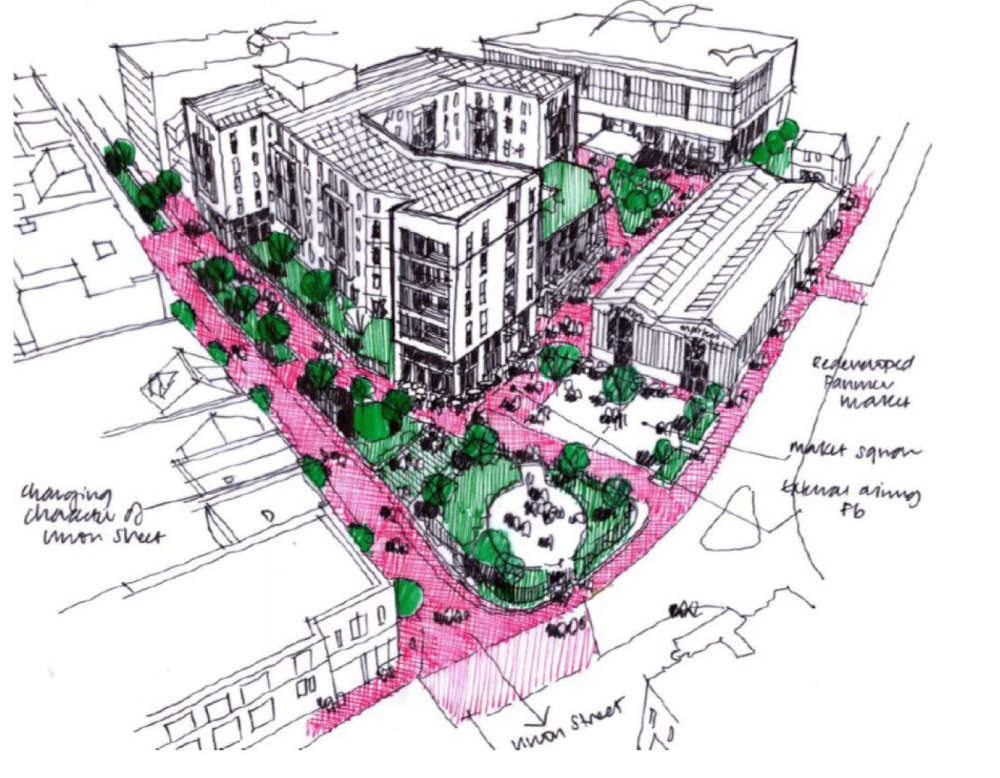 Decision soon on Torquay town centre redevelopment
Decision soon on Torquay town centre redevelopment
 Flights between Exeter and Amsterdam underway again
Flights between Exeter and Amsterdam underway again
 Man kicked unconscious in Plymouth
Man kicked unconscious in Plymouth
